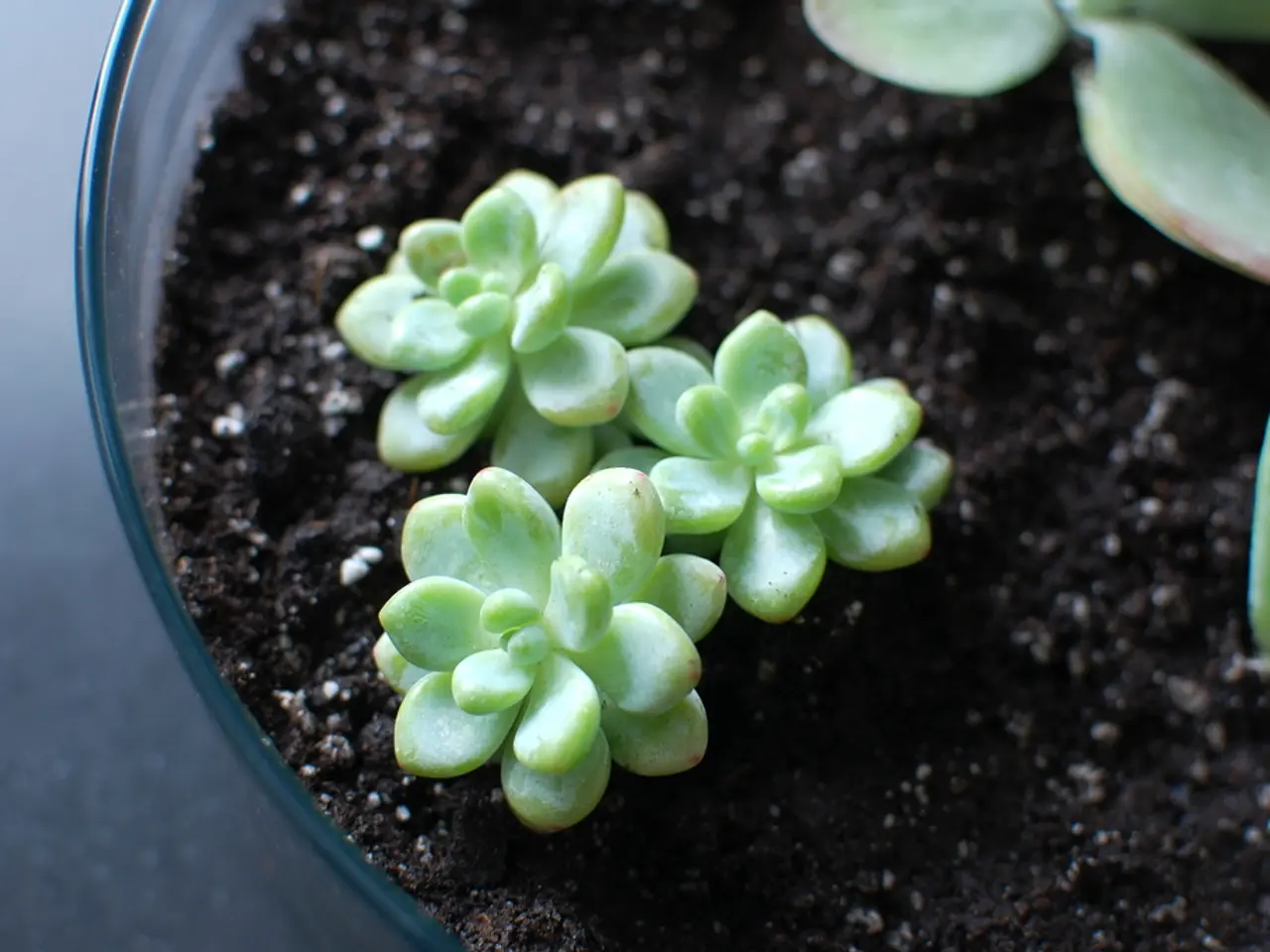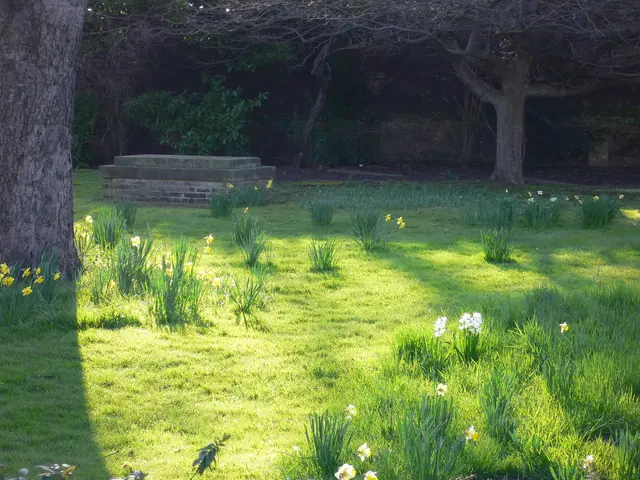Optimal Soil for Hostas: Nurturing, Properly Draining, and Nutrient-Rich
Hostas, the most popular herbaceous perennial in the world, are prized for their striking foliage and summer flowers, which come in a myriad of colours, sizes, and shapes. These versatile plants can be used in a variety of garden settings, from patio to rock gardens. To ensure a healthy and thriving hosta garden, it is essential to create the optimal growing conditions.
Hostas thrive best in soil that is rich in organic matter, well-draining but retains moisture, and not prone to waterlogging. Heavy clay soil without amendments tends to cause root rot in hostas, so it should be amended with organic materials such as compost, well-rotted leaf mold, or aged manure. These amendments improve drainage in clay soils and help retain moisture in sandy soils while providing essential nutrients.
The ideal pH range for hostas is slightly acidic to neutral, between 6.0 and 7.0. This pH range ensures good nutrient availability and healthy root development. Outside this range, nutrient uptake can be hindered, affecting plant growth and vigor.
Incorporate a healthy amount of organic matter annually to enrich the soil and improve its texture and fertility. Avoid planting hostas directly in heavy clay without amendment to prevent root rot. Mulching with organic materials before winter helps protect roots and maintain soil moisture.
When planting hostas, dig a hole twice the width and depth of the root ball. Place the root ball in the hole, ensuring it is at the same level as the surrounding soil. After planting, lay down a 2- to 3-inch layer of mulch.
Hostas benefit from being planted in a raised area or where the soil doesn't stay saturated. They are native to areas that receive 60+ inches of rain annually, so they require moist but not waterlogged soil. Hostas prefer a slightly acidic to neutral pH level, ideally between 6.5 and 7.0.
It is important to remember that hostas do not like to sit in wet soil, especially during winter. They can also be susceptible to slugs, so be aware that mulch, while beneficial for retaining moisture, can also attract these pests.
By following these guidelines, you will provide hostas with a healthy growing environment, promoting lush foliage and vigorous growth. Hostas are hardy and require very little maintenance, making them an excellent choice for gardeners of all levels. Enjoy the beauty of these fascinating plants as they grace your garden with their unique charm.
[1] Gardening Know How. (2021). Hosta Growing Guide. Retrieved from https://www.gardeningknowhow.com/ornamental/plants/hosta/hosta-growing-guide.htm [2] The Spruce. (2021). How to Grow Hostas. Retrieved from https://www.thespruce.com/growing-hostas-1402307 [3] Monrovia. (2021). Hostas. Retrieved from https://www.monrovia.com/Plant-Library/Hostas/1/10001/ [4] University of Rhode Island Master Gardeners Association. (2021). Hostas: Growing Hostas in Your Garden. Retrieved from https://extension.uri.edu/files/documents/2016/hostas-growing-hostas-in-your-garden.pdf
Hostas are best grown in a soil that is rich in organic matter, well-draining yet retains moisture, and not prone to waterlogging. This lifestyle preference can be catered to by amending heavy clay soil with organic materials like compost, well-rotted leaf mold, or aged manure to create an optimized home-and-garden environment for hostas. Adequate maintenance practices, such as annual incorporation of organic matter and mulching before winter, further promote a healthy and thriving hosta garden, allowing these gardening favorites to showcase their striking foliage and summer flowers.








